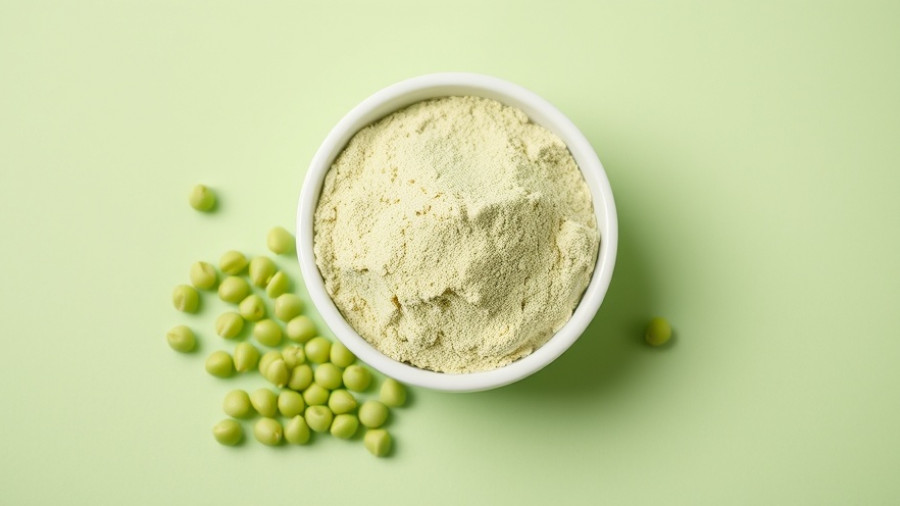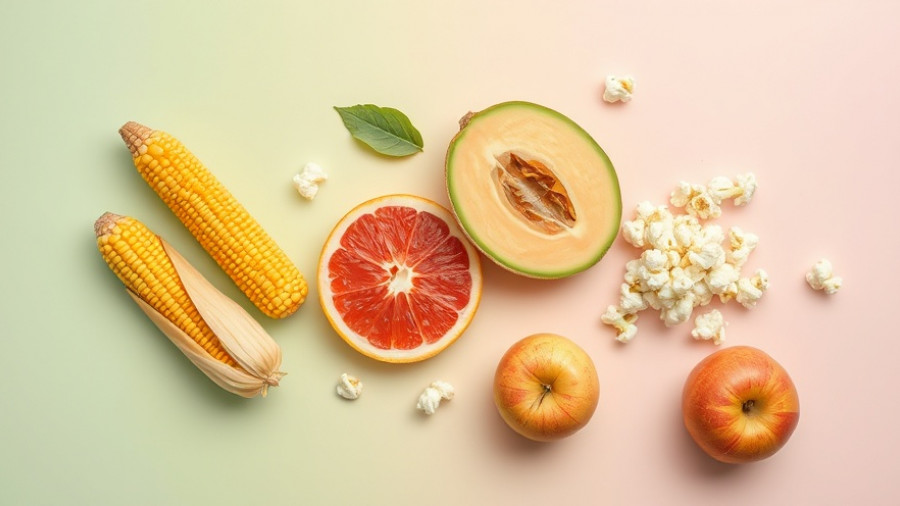
Understanding Pea Protein: The Benefits and Digestive Impact
As the popularity of plant-based diets grows, pea protein has emerged as a frontrunner among nutritional supplements. Known for its impressive protein content and iron-rich profile, pea protein serves as an appealing option for those looking to bolster their health without resorting to animal products. While it offers numerous benefits, many are curious about its impact on digestion, especially when compared to other protein sources.
What Makes Pea Protein a Popular Choice?
Pea protein sets itself apart from other dietary supplements through its nutrient density and versatility. Made by extracting protein from yellow peas, it provides around 15 to 20 grams of protein per ¼ cup serving, depending on the brand. Notably, it is also low in carbohydrates and fats, making it a suitable choice for a multitude of diets—including vegan, gluten-free, and hypoallergenic.
Moreover, from a sustainability perspective, pea protein requires fewer resources for production compared to animal proteins, making it an environmentally friendly option. As a considerable leap towards eco-conscious eating, this protein source caters well to those who are health-aware and environmentally conscious alike.
The Digestive Implications of Pea Protein
Although many find pea protein manageable, it’s worth considering that it might still lead to digestive discomfort for some. Unlike dairy-based proteins, which can cause significant discomfort for lactose intolerant individuals, pea protein has a reduced risk of digestive issues thanks to its lower fiber content. This means that while consuming whole peas might lead to bloating or gas due to their fiber density, pea protein powder primarily cuts out the fiber, making it generally easier on the stomach.
This selective removal of fiber does not mean that everyone will be free from digestive issues, however. Individual reactions may vary based on personal tolerance levels and quantities consumed. Experimentation may be needed to find the amount that works best for you, particularly if you're new to integrating supplements into your diet.
Hydrolyzed Pea Protein: A Solution for Digestion
For those who find regular pea protein hard to digest, considering hydrolyzed pea protein could be a game-changer. Hydrolysis is a process of breaking down the amino acids into smaller chains, which can enhance digestibility. Research has shown that hydrolyzed protein is less likely to cause gastrointestinal issues, making it a favorable option for sensitive stomachs.
In addition to improved digestibility, studies suggest that hydrolyzed pea protein may provide enhanced bioactivity, assisting the body in processes like lowering blood pressure and combating free radicals that could be harmful to health.
The Nutritional Upside: Beyond Muscle Building
Incorporating pea protein into your diet can foster various health benefits. Not only does it assist in muscle growth—making it a compelling supplement for athletes and active individuals—but it can also help in maintaining a feeling of fullness. Following a high-protein meal can lead to reduced overall calorie intake, aiding in effective weight management and possibly supporting weight loss goals.
Furthermore, its rich iron content could be crucial for those who struggle to maintain healthy iron levels. For instance, pairing pea protein with vitamin C-rich foods can enhance iron absorption, making it easier to include in diets prone to deficiencies.
Modern Food Innovations and Consumption Tips
There are countless ways to integrate pea protein into your meals. For instance, many health enthusiasts stir it into smoothies, oatmeal, or even baked goods to enhance their nutritional profiles. Not only do these additions help increase protein intake but they often contribute a smoother texture compared to other plant-based protein powders, which may have chalky finishes.
To maximize the benefits of protein, especially for muscle recovery, it’s suggested to consume pea protein shakes within two hours post-exercise. This timing can help fuel recovery and optimize muscle building.
Be Informed: Choosing Quality Pea Protein
Despite its advantages, it's essential to remain vigilant about the quality of pea protein supplements. Because they're not tightly regulated, the purity and variation of protein levels can differ widely among brands, leading to potential unwanted additives or contaminants. It's advisable to opt for products that are third-party tested for safety and quality.
Moreover, although many steer clear of allergenic foods, those with known allergies to peas should definitely refrain from using pea protein supplements. Ensuring that you select high-quality, well-researched products is key to enjoying the benefits without the risks.
Conclusion: Embracing the Plant-Based Protein Trend
Pea protein stands out as a favorable option for health-conscious adults aiming for nutritional innovation. Its array of benefits—from muscle support to aiding satiety—complement our modern dietary needs, and with mindful selection, it can effectively enhance overall well-being. If you’re looking to jump in on the protein supplement trend, pea protein could be a wonderful addition to your health toolkit.
The world of nutrition can be complex, but the right protein source tailored to your lifestyle can keep you on the path to wellness. As with any dietary change, always listen to your body and consult with healthcare providers to determine the best approach for your individual needs.
 Add Row
Add Row  Add
Add 




Write A Comment